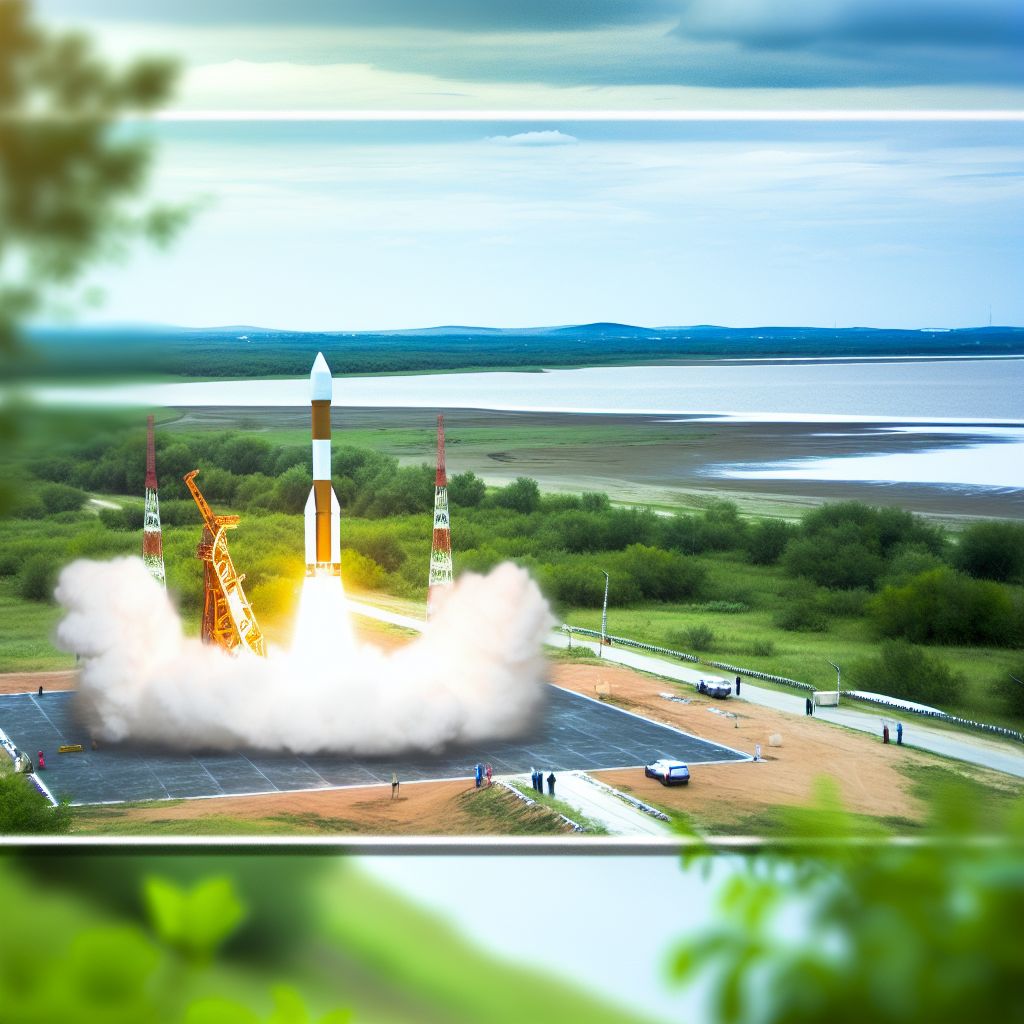Deutsch: Raketenantrieb / Español: Propulsión de cohetes / Português: Propulsão de foguetes / Français: Propulsion de fusées / Italiano: Propulsione dei razzi
Rocket Propulsion in the Space industry context refers to the method by which rockets and spacecraft are propelled through Space. This propulsion system generates thrust by expelling Mass in one direction, utilizing Newton's third law of motion, which states that for every action, there is an equal and opposite reaction. Rocket propulsion is fundamental for launching satellites into orbit, sending missions to other planets, and returning vehicles safely to Earth. It encompasses a range of technologies, including chemical rockets that burn propellant, electric propulsion systems that accelerate ions, and experimental methods like nuclear thermal propulsion.
Description

Rocket propulsion systems are characterized by their ability to operate in the Vacuum of space, where there is no air to push against as with airplane engines. The most common type of rocket propulsion involves chemical reactions that produce high-speed gas jets to generate thrust. These systems are divided into Liquid and solid propellant rockets, each with its advantages and challenges. Electric or ion propulsion represents a more efficient albeit less powerful alternative, suitable for deep space missions and satellite maneuvering. The choice of propulsion system depends on the mission's specific requirements, including the payload size, destination, and available resources.
Application Areas
Rocket propulsion is Critical across a broad Spectrum of applications within the space industry:
- Launch Vehicles: Propelling payloads from Earth's surface into space or orbit.
- Interplanetary Spacecraft: Providing the thrust necessary to escape Earth's orbit and navigate to other planets or Celestial bodies.
- Satellite Station-Keeping: Adjusting satellite orbits and attitudes to maintain precise positions or to avoid collisions.
- Deep Space Exploration: Enabling long-duration missions far beyond Earth's orbit, requiring efficient and reliable propulsion systems.
Well-Known Examples
- Saturn V Rocket: The launch vehicle that propelled Apollo astronauts to the Moon, utilizing a multi-stage chemical rocket propulsion system.
- SpaceX Falcon Heavy: A heavy-lift launch vehicle that uses liquid propellant engines for delivering payloads to orbit, demonstrating the capabilities of modern chemical propulsion.
- Dawn Spacecraft: Utilized ion propulsion to visit and study the Asteroid Vesta and dwarf planet Ceres, showcasing the potential of electric propulsion for deep space missions.
Treatment and Risks
Developing and operating rocket propulsion systems involve significant challenges and risks:
- Technical Complexity: Designing engines that can withstand the extreme temperatures and pressures involved in rocket propulsion.
- Safety and Reliability: Ensuring the safety of crewed missions and the reliability of uncrewed spacecraft, given the potentially explosive nature of chemical propellants.
- Environmental Impact: Addressing the environmental concerns associated with rocket launches, which can release pollutants into the Atmosphere.
- Cost: Balancing the Performance benefits of advanced propulsion systems against the high Development and operational costs.
Similar Terms or Synonyms
Summary
Rocket propulsion is a cornerstone of space Exploration and satellite technology, providing the means to overcome Earth's Gravity and navigate the vastness of space. Through the ongoing development of propulsion technologies, the space industry continues to expand the frontiers of human knowledge and capability in space, pushing further into the solar system and beyond.
--
Related Articles to the term 'Rocket Propulsion' | |
| 'Thrust' | ■■■■■■■■■■ |
| Thrust is a reaction force described quantitatively by Newton\'s third law. When a system expels or accelerates . . . Read More | |
| 'Boosting' | ■■■■■■■■■ |
| Boosting refers to the use of additional propulsion to increase the speed or altitude of a spacecraft . . . Read More | |
| 'Booster' | ■■■■■■■■ |
| A booster refers to a rocket or Propulsion system designed to provide the initial thrust needed to lift . . . Read More | |
| 'Propulsion' | ■■■■■■■■ |
| Propulsion is the generation of force to launch an object, which is typically a rocket. . . . . . . Read More | |
| 'Rocket engine' | ■■■■■■■■ |
| Rocket engine: Rocket Engine is a propulsion system used in spacecraft and launch vehicles to generate . . . Read More | |
| 'Propellant' | ■■■■■■■■ |
| Propellant: A propellant (or propellent) is a Mass that is expelled or expanded in such a way as to create . . . Read More | |
| 'Smallsat' | ■■■■■■■ |
| Smallsat: A small satellite, miniaturized satellite, or smallsat is a satellite of low Mass and size, . . . Read More | |
| 'JPL' | ■■■■■■■ |
| JPL stands for Jet Propulsion Laboratory. It is a research and development center located in Pasadena, . . . Read More | |
| 'Ejection' | ■■■■■■■ |
| Ejection in the Space industry context refers to the process or action of expelling or releasing a spacecraft, . . . Read More | |
| 'Take-off' | ■■■■■■■ |
| Take-off in the Space industry context refers to the initial phase of a spacecraft\'s launch, where the . . . Read More | |
